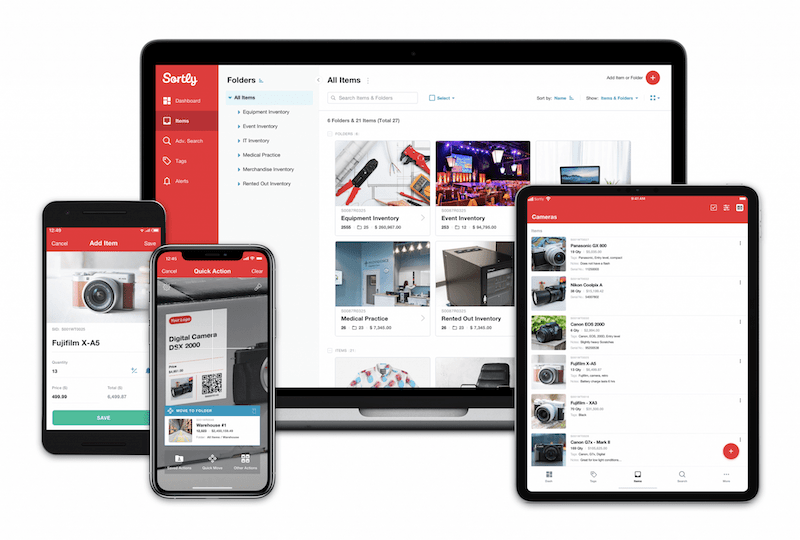Asset tracking is a key component of inventory management, the strategy of organizing everything your business stocks. Assets, by definition, are anything that a business owns of value. Anything that can be liquidated into cash is considered an asset.
Most businesses that do not sell or turnover traditional inventory still possess assets. For example, a construction company uses equipment, machinery, and vehicles, all of which are considered assets. Or, a law firm provides its employees a laptop computer, a monitor, an external hard drive, and a mouse—all of those are considered assets as well. Since these things have monetary value, it’s important to track where they are, who is using them, and what condition they are in, as those things directly impact your business’s bottom line.
In this article, we’ll also cover why asset tracking matters and how businesses can optimize their asset tracking strategy with asset tracking software.
Why is asset tracking important?
Asset tracking is important because it allows businesses to keep tabs on their valuable property, even as it moves from location to location, or property to property. Asset tracking can also help businesses become more efficient, identify inventory loss, and quickly and accurately file taxes.
Here’s a little bit more information on these four reasons why tracking assets is so essential:
1. Businesses can account for their property
With the right asset tracking system, companies always know where their most valuable property is at any given time.
For example, an event rental company can use inventory tracking software to record where all their different assets are located. Perhaps the business has a warehouse full of tables and chairs, a storage closet full of centerpieces, and an additional storage unit full of lounge furniture. All of these items can be seamlessly cataloged in an inventory app, even though they’re stored across multiple locations.
Moreover, the event company can check these items in and out using barcodes and QR codes. If 5 tables and chairs are going to a convention center for the week, a return date can even be logged right into the system.
Related: How to Create QR Codes for Asset Tracking
2. Companies can improve operations
By properly tracking assets in an inventory management system, businesses can gain a deeper understanding of how items are used by their employees, vendors, customers or service providers. These insights can help businesses streamline operations, hire more help, provide more training and more.
For many businesses, setting an inventory management strategy into place is enough to improve efficiency. What’s more, if you use a simple inventory app that works on smartphones, almost all employees will be able to participate in asset tracking. The easier your asset tracking process is, the more employees will abide by it. And, the more employees who abide by it, the more you’ll be able to learn about how assets move through your company.
Experience the simplest inventory management software.
Are you ready to transform how your business does inventory?
3. Businesses can identify inventory loss
Inventory loss, or shrinkage, occurs when an item intended for sale disappears or is damaged before that sale occurs. Of course, if your business is tracking assets, that sale may never happen anyway. In that case, shrinkage refers more to asset loss, damage or theft.
By implementing an airtight asset tracking strategy, your business will always know who has what, where it is, and what condition it’s in. That way, if a laptop is never returned, or is returned in poor condition, you’ll have information about who checked it out, and whether it was damaged to begin with.
4. Companies can prepare tax returns promptly
Because assets have value, businesses need to track them carefully if they want to keep good records for tax purposes. Depreciating assets, like machines, furniture, and technology, depreciate a little each year. You’ll need records of how much you paid for these items, how much you spend maintaining them, and how their condition changes over time.
Using an inventory app like Sortly, tracking this information is easy. You can even upload pictures and receipts, assign value, enter the condition, and more. Best of all, you can create a folder or tag for all your depreciating assets, then generate a report about only these items to share with your accountant.
Related: How to Record Asset Depreciation
About Sortly

Sortly is a top-rated inventory and asset tracking app that helps businesses of every shape and size stay on top of their assets, inventory, consumables, and more. Whether you track IT assets or fleets of vehicles, Sortly can make help you easily track and manage your business’s assets as they change locations and hands.
Ready to get started tracking your business’s assets? Try Sortly free today.




